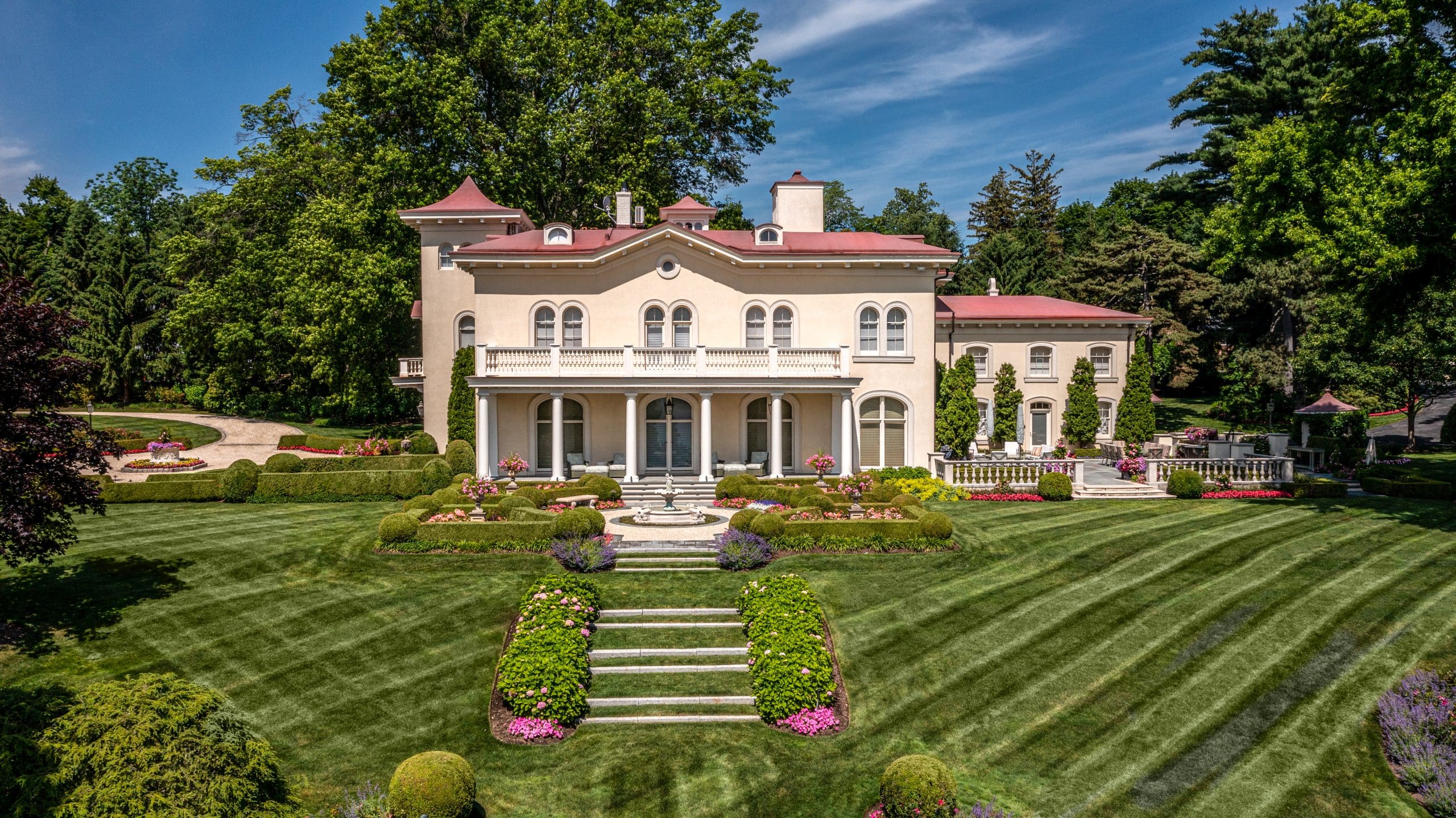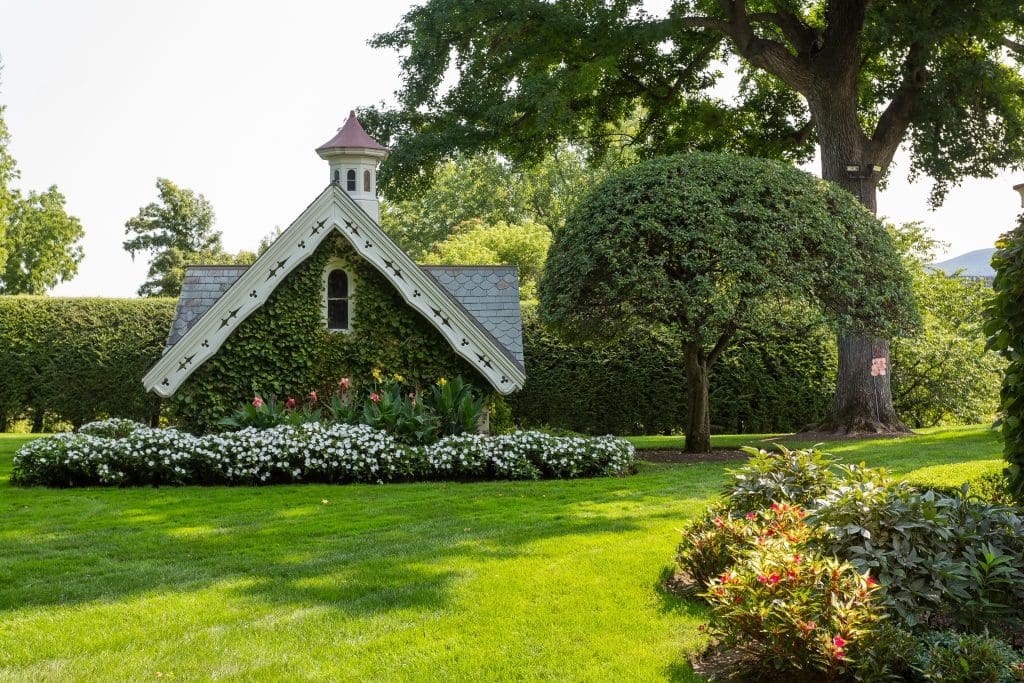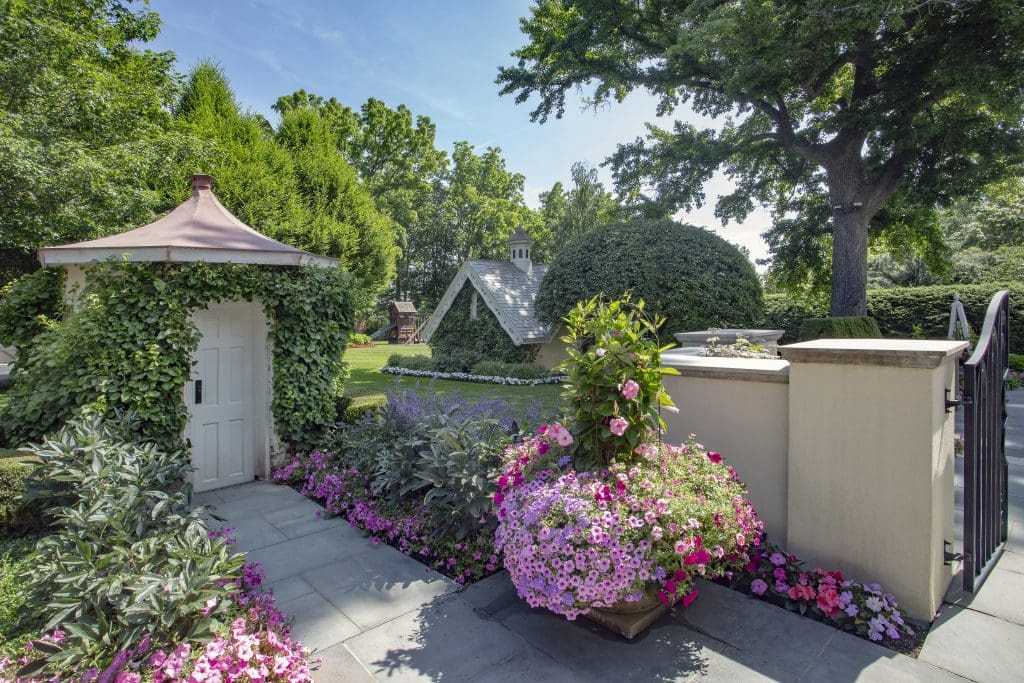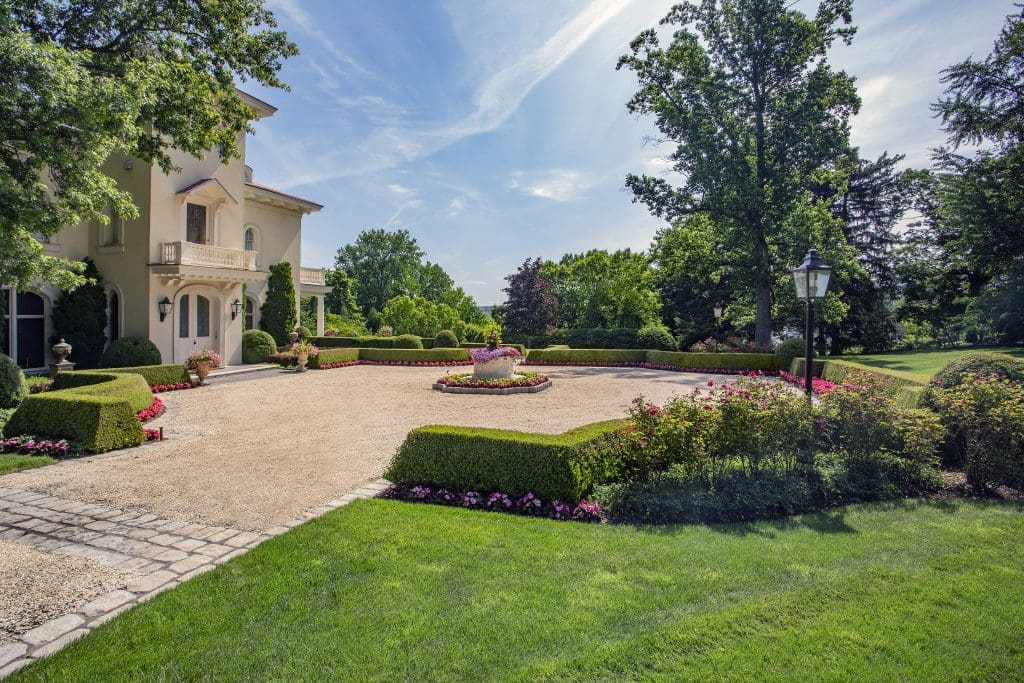
This grand estate sits in the Hudson Valley of New York, offering a perfect view of the Hudson River and the Newburgh-Beacon Bridge. The owners purchased the stunning property in 2008 and began renovating the home and grounds a year later.
Since the renovations began, Maple Leaf Associates, based in Putnam Valley, New York, has been involved with various roles on the property, from advising the homeowners on plantings to installing all the plant material and day-to-day maintenance. Their work earned them a Gold Award in the 2023 Awards of Excellence.

Richard Bevilacqua, the director of operations – landscape maintenance at Maple Leaf Associates, says winning a Gold Award has been an honor for the Maple Leaf team.
“We have been maintaining this property for over a decade and were involved in every facet of landscaping renovation when the current owner purchased the property,” Bevilacqua says. “It’s hard to quantify all of the time, effort, and energy that goes into maintaining a site like this, and to be recognized on a national level is incredibly humbling.”
When the renovations began, the family dreamed of having lush lawns, English-themed gardens, manicured hedges, and lots of colors on the grounds, so Maple Leaf created a customer program to ensure plants were being used correctly throughout the site. Each season, they would fine-tune the design as they made observations about the conditions of the grounds.
Boxwood Best Practices
A main feature of the landscape is the 1,500 linear feet of boxwood hedges, which surround the front of the home and the back fountain area. These shrubs present a challenge as the site matures each year.

“The boxwoods are trimmed a minimum of three times each season,” Bevilacqua notes. “Some hedgerows are treated with growth regulators to reduce the number of pruning; however, due to the presence of growth regulators for the annuals, we must use them cautiously.”
Maple Leaf continues to experiment with growth regulators to reduce the amount of pruning, and their results have shown better color on the boxwoods, denser plants, and less time needed to shear them.
With the extensive number of boxwoods, precautions are taken to minimize the risk of Boxwood blight.
“The boxwoods hedges receive almost no overhead irrigation, which greatly reduces the chance of blight,” Bevilacqua says, “There are also minimal ‘host plants’ on the site that cause the blight to have a place to attack, and the hedgerows are on their own custom Plant Health Care program.”
Roses are another key part of the landscape, and Maple Leaf continually monitors them to ensure they’re free of pest and insect problems.
Extensive Landscape Management
Shrubs are just part of the maintenance, as 3,500 annual plants and 50 liners and pots are installed each year. These plants are carefully deadheaded, irrigated, trimmed, fertilized, and monitored for disease each week to look their best.

The expansive number of annuals requires the plant technicians to be trained on each type of plant to understand their needs and address any problems. Annuals are given a mixture of different fertilizers, starting with a standard 20-20-20, which is later switched to a bloom booster to discourage vegetative growth and promote flowering.
Another key feature is the turf, as the homeowners expect “golf course” quality for their yard. Maple Leaf monitors these areas for disease, drought stress, and drainage issues. One challenge is the compact clay soil requiring aeration and yearly overseeding. In areas with inferior drainage, they top-dress with a compost mix and sand. They also have a customer fertilization program and test the soil yearly to remain efficient in their applications.
Each week is different, but Bevilacqua says, “We have an average crew of four employees for a weekly maintenance visit, depending on the time of season, and a weekly visit is approximately 32 hours.”

Drainage was a significant challenge during the renovation phase, as the property slopes toward the river, causing water to drain through the site. Drainage problems also occurred along the driveway and areas where the roof drained. To solve these issues, Maple Leaf installed sub-surface drainage systems that redirect or recharge the water into the soil with recharger tanks. In spots where the water pooled, surface drainage was installed. Over the years, this system has been adjusted to meet the drainage needs of each microclimate on the site.
In the early stages of the renovation, the owner’s expectations for the property created difficulties with the complex nature of the property. However, as Maple Leaf began to know the owners, they were able to educate them on the intricate details of the property and keep the lines of communication open to maintain realistic expectations. Like any project, a strong partnership with the client has been vital.
“This project excites us because the owner truly cares about and values the landscape,” Bevilaqua says. “They are a hands-on client with feedback and input, which makes it a team effort. Another exciting part of this project is the level of detail we can produce due to the client’s expectations.”
Interested in participating in the Awards of Excellence? Be sure to enter your projects when entries open in February 2024.



